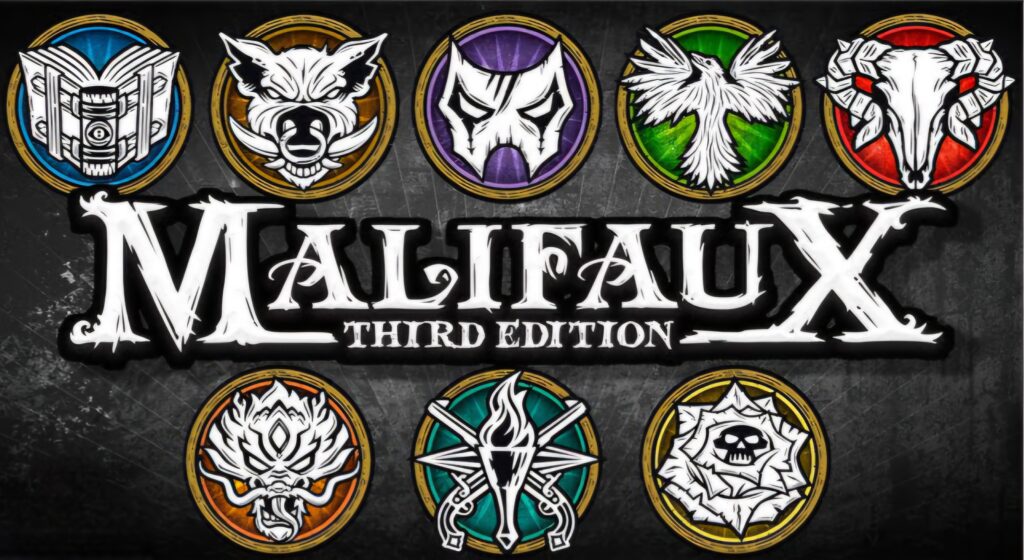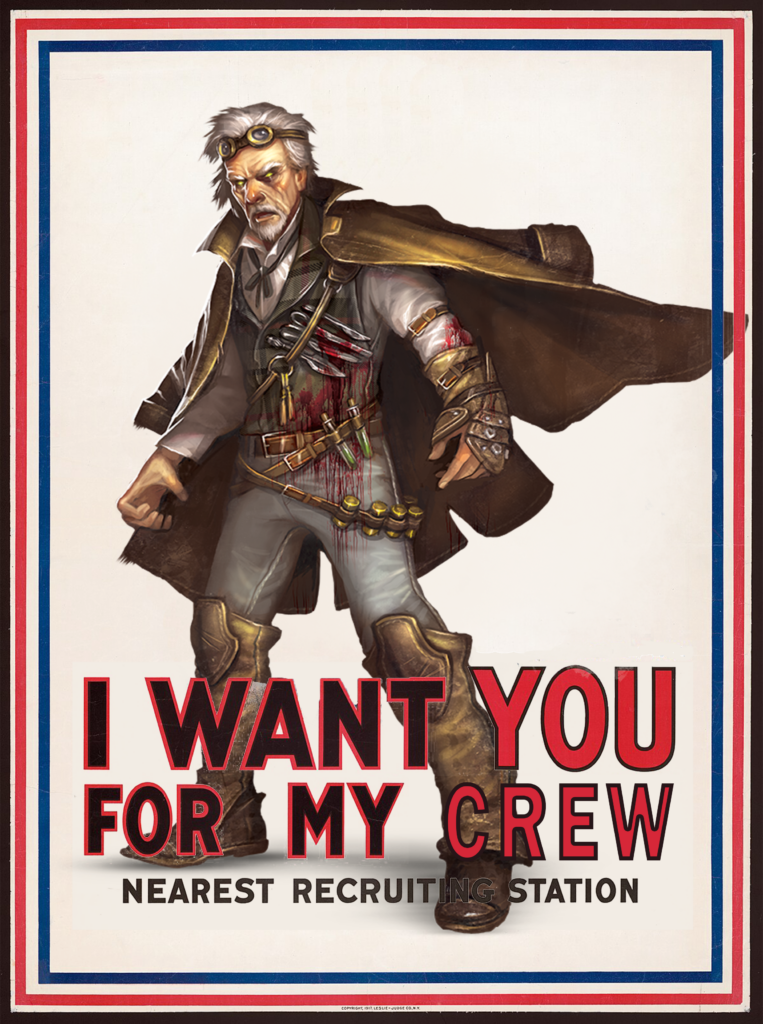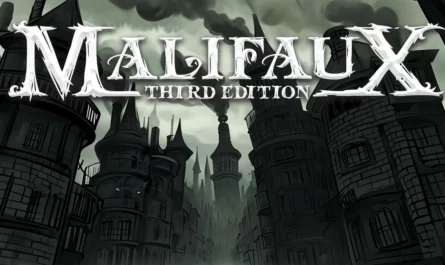Even for seasoned miniature wargamers, Malifaux can be confusing. Building your first crews requires juggling concepts like Faction, Master, and Keyword… and they don’t mean the same thing as in most other games! Let’s break it all down, and I’ll share my thoughts on how to choose your first crews and start off right in Malifaux.
Foreword
While writing this article, the open beta for Malifaux’s 4th edition was released. I’ve decided to slightly revise the text to reflect the changes from this new edition — at least what’s available in the current beta.
Before going any further, if you’re unfamiliar with Malifaux and thinking about giving it a try, I recommend starting with the following article. It explains some of the game’s key concepts.
What is a Faction in Malifaux?

Unlike in many other games, a Malifaux Faction doesn’t define a specific playstyle. There’s no “summoner faction,” or a faction built solely around control, etc. It’s more of a theme: the Guild represents authority and law enforcement, the Ten Thunders are the criminal underworld, Outcasts are mercenaries… Characters in a faction tend to share certain traits. For example, Ten Thunders tend to be more durable than members of the Explorer’s Society. The latter are more like adventurers, so it’s no surprise they’re less used to taking hits than the Triad enforcers! Of course, that’s a generalization, and there are plenty of exceptions, but you get the idea.
The Faction mainly matters because it limits your choice of Master, the leader of your crew. Each Master is associated with a Faction, and this relationship is rooted in the game’s lore. Some Masters have even switched factions across editions to reflect their evolving stories!
So why pick a Faction?
In a tournament, each player declares a Faction. The player can then freely choose a different Master for each round, if they wish. This choice is typically influenced by the scenario and the opponent’s Faction. It allows you to adjust your playstyle to the situation.
Choosing a Faction also affects your crew lists. Each Faction offers a pool of characters that any of its Masters can hire without penalty. We’ll talk more about these “Versatiles” shortly.
Masters and Keywords
Masters and Keywords go hand in hand. Every character is associated with a Keyword. Unlike in many games, a Keyword doesn’t just represent a special rule or trait. While characters tied to a Master often share an ability, the Keyword mostly represents their affiliation with that Master. A Keyword is the shared reference between a Master and their closest allies, who will form the backbone of your crew.

It’s listed at the bottom of all boxes containing characters tied to that Keyword.
Hiring within the Keyword and the Faction
When choosing a Master, you can hire characters tied to their Keyword — even if those characters belong to a different Faction! You can also hire characters outside that Keyword, but only if they belong to the Master’s Faction. These out-of-keyword hires cost a bit more and don’t benefit from the Keyword ability.
Versatile characters
There’s an exception to the increased cost of out-of-keyword models: Versatile characters. Think of them like mercenaries. They’re always willing to work with any Master from their Faction. They won’t gain the Keyword ability either, but they can be a great way to cover gaps in your crew. For example, some tables are packed with hazardous terrain — or your opponent might know how to deploy it! If no one in your Keyword can ignore it, maybe a Versatile model in your Faction can!
Which Master should you choose?
To sum up: the Master defines your playstyle and the characters you’ll typically recruit. Choosing your Master is important, and it can be overwhelming when you’re new to Malifaux.
If you’re already into wargames, researching the Masters’ playstyles is likely where you’ll start. For that, the internet — and especially Wyrd’s Discord channel — will be incredibly helpful. I’ve added the link in the image to the right. When reading a Master’s card for the first time, it’s not always obvious whether they’re primarily a beater, a summoner, or a strategist who supports their allies with extra actions.
If Malifaux is one of your first miniature games — or if you’re like me and care more about lore than game mechanics — or simply don’t want to spend hours researching 50 different Masters, then just pick 3 or 4 whose theme or story appeals to you. If you struggle to pick your favorite, then look at their playstyle. Learning the game with a Master you like is, in my opinion, much more enjoyable than starting with one that’s considered “strong.” In Malifaux, scenarios win games — rarely brute force!
That said, some Masters are harder to play than others — sometimes because of weaknesses like low mobility or poor durability, but often because they require tricky positioning or managing chain reactions. The community will gladly point out which Keywords are notoriously tough to play. Still, don’t hesitate to try a Master you like — what’s difficult for one player might click for you. You might even find it easier to play a “hard” crew than one labeled beginner-friendly!
Your first Malifaux games
Recruiting your crew

For your first games of Malifaux, I recommend sticking to characters with the same Keyword as your Master. These characters are designed to work together, making it easier to build synergies and understand your Master’s core playstyle. After a few games, add in some Versatiles and/or out-of-keyword models. This gives you time to discover your Master’s strengths and weaknesses. Experiment — it takes a bit of time to learn how and when to use certain models effectively.
Some people recommend starting with games below the standard point level. This can be great if you’re new to wargaming or want to master the core rules before diving deeper. But you risk missing out on some key synergies that define a playstyle, especially in game formats like “Henchman Hardcore” where there’s no Master on the table.
Personally, I suggest playing two or three games with your chosen Master, recruiting only within the Keyword. Focus on the core rules, Strategies, and Schemes. You’ll naturally develop a good feel for the Master’s style. Then take time to refine your opening moves — your first turn tactics.
Opening the game
The first turn is often the quietest in terms of action, but it’s crucial for setting up the rest of the game. Since there’s usually little interaction with the opponent’s crew, it can be planned in advance. Some models need specific conditions to be effective — a nearby marker, a certain token/state, or having already moved toward an objective or enemy. This planning will help you decide how to deploy your models, since not only do some need to activate before others, they also typically need to be within range and line of sight!
Stay focused on the scenario. Try to maximize your internal synergies. After a few games, you’ll better recognize which Scheme (secret objective) to pick. Don’t worry too much about the enemy crew’s abilities just yet — that knowledge comes with experience. The better you understand your own crew, the easier it’ll be to adapt to unfamiliar opponents.

Need advice building your crew?
Join your country’s Malifaux Discord community and get answers to your questions.





